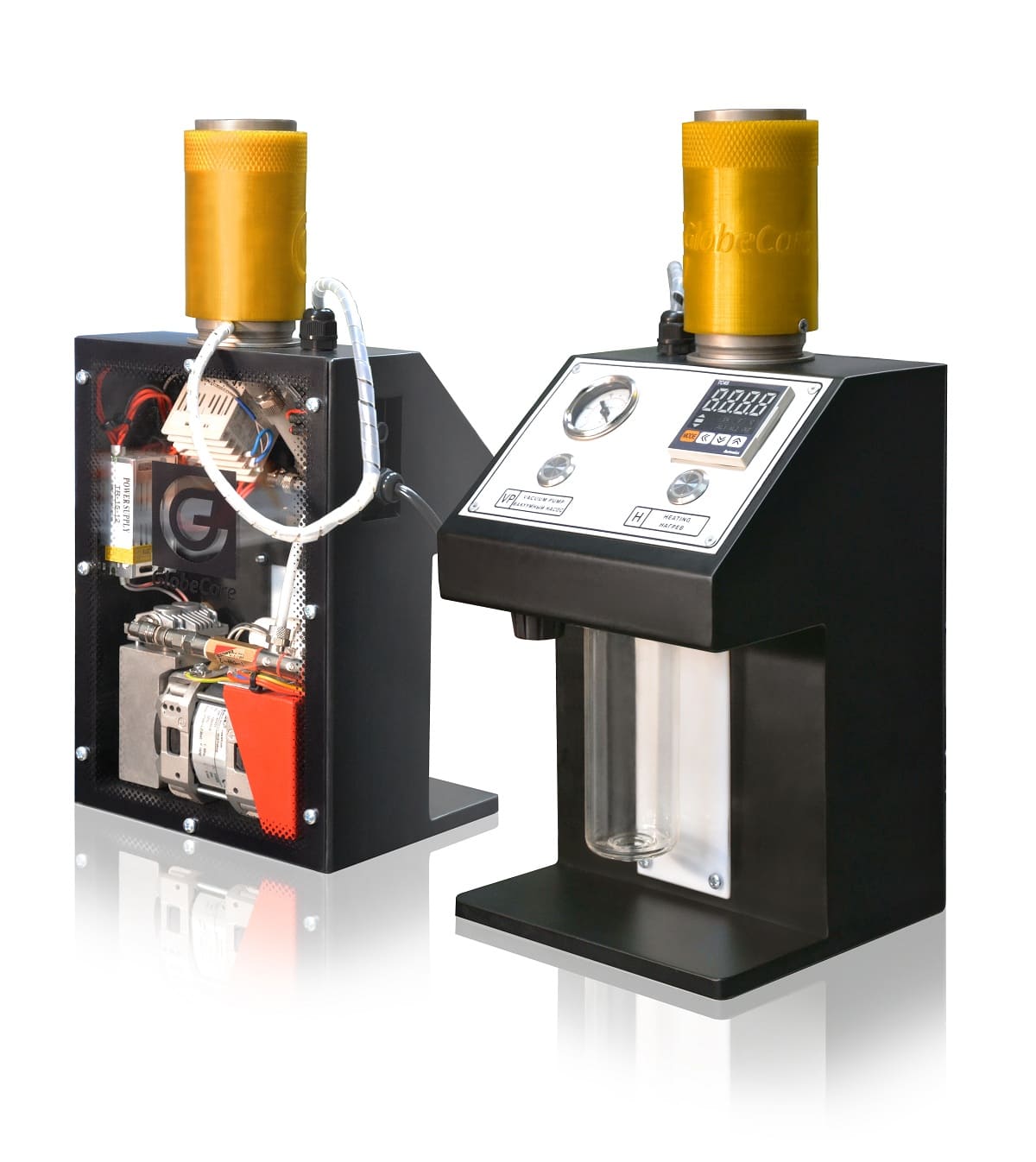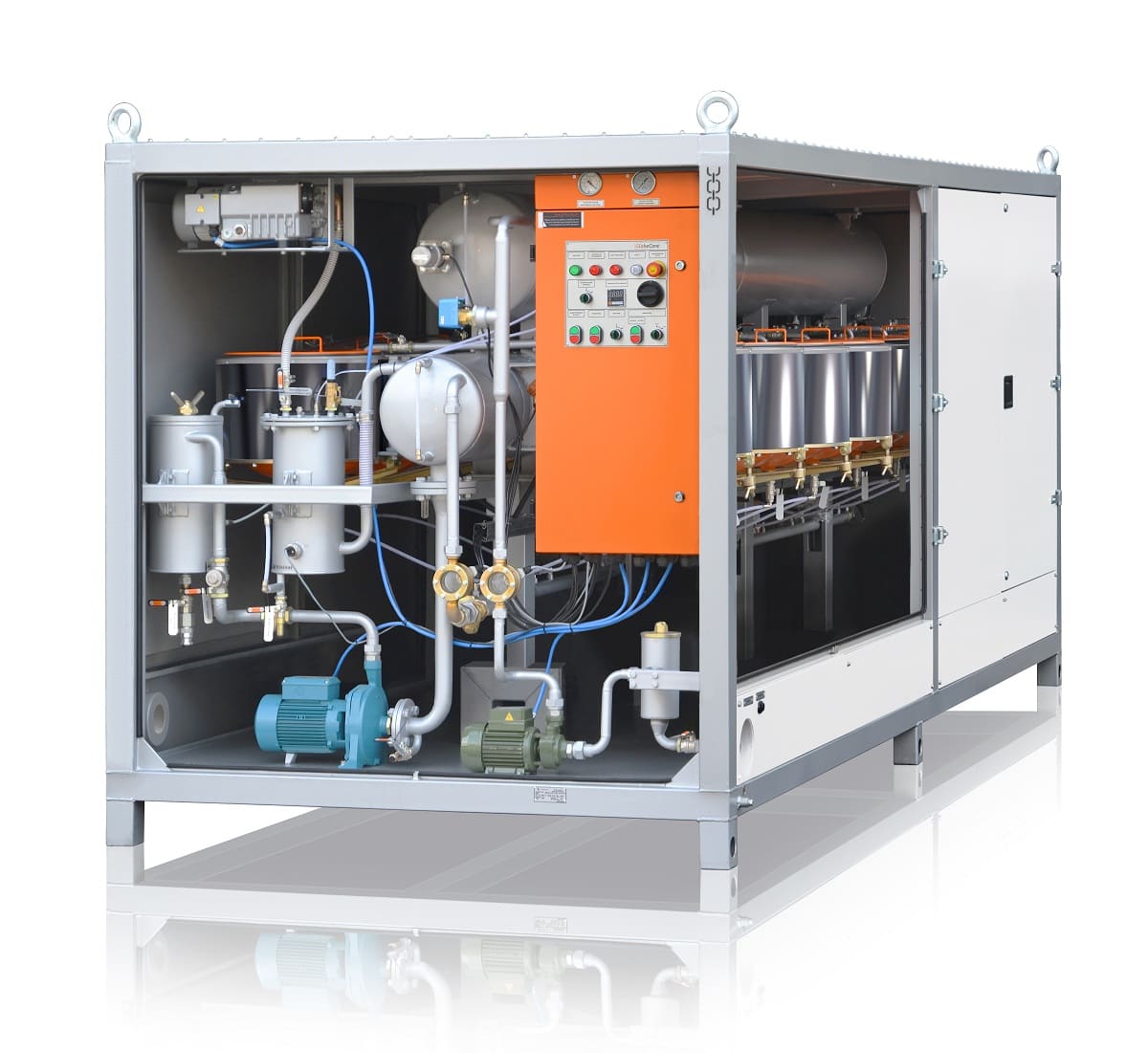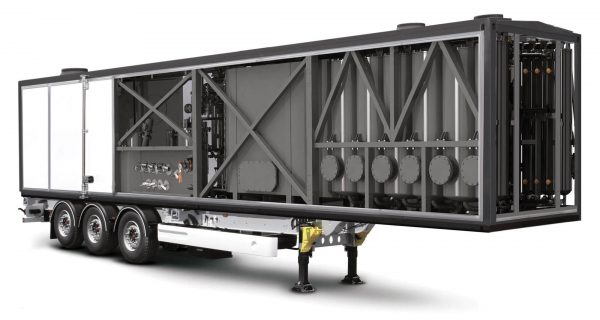GlobeCore offers several models of transformer oil regeneration units. This article looks into the differences between regeneration in MCU and CMM-R types.
Application
The MCU units are designed for partial regeneration of transformer oil, which includes removal of water, water-soluble acids and particulate matter. The CMM-R, on the other hand, performs complete regeneration, including removal of solved gases, free and solved water, particulate matter and aging products, as well as stabilization of oil by mixing it with an antioxidant additive.
Sorbent type
Both the MCU and the CMM-R are based on adsorption. The MCU uses synthetic zeolite: a micro-porous substance which captures moisture and holds it inside its crystals.
The CMM-R uses Fuller’s earth, which a natural microporous material, capable of capturing and holding contaminants and products of oil decomposition.
Operation principle
The MCU unit is based on a simple principle. Heated oil is transported by a pump through zeolite cartridges, where moisture is removed. The system includes filters for particulate matter removal.
The CMM-R is more complex. This unit consists of several sections, each performing a separate function. There is degassing, oil regeneration and sorbent reactivation section, as well as an additive injection section.
How much oil can be processed
One column of the CMM-R unit can process up to 90 tons of oil considering all sorbent reactivations cycles. The MCU can process up to 200 tons of oil with one sorbent load (without reactivation). The number of CMM-R columns depends on the customer’s requirements (from 2 to 32 columns). The MCU unit has only one or two zeolite cartridges.
Which parameters are improved
Processing of oil in the MCU improves mostly the oil’s dielectric strength, which can grow from 5-10 to 50 kV and higher in only one pass.
The CMM-R, beside improving the dielectric strength of the oil from 30 to 70 kV, also reduce acidity (from 0.2 to 0.03 mg KOH/g) and dissipation factor (from 0.01 to 0.005 at 90ºС). The numbers may vary and offer a general idea of the units’ functions. Both units can process liquids with worse parameters, but several passes may be required before achieving the desired results.
Adsorbent media restoration
To restore zeolite, the MCU requires external equipment (the BRZ or BRPS units). Removal of zeolite cartridges is not required. The CMM-R unit is capable of reactivating the Fuller’s earth independently and directly inside the unit (in the sorbent reactivation section).
Loss of sorbent during reactivation
One reactivation causes 10-15% loss of zeolite (by weight). The sorbent load in the zeolite cartridges must be replenished after reactivation. As far as Fuller’s earth is concerned, its durability is limited rather by the gradual exhaustion. This sorbent can be reactivated as many as 300 times, which is the equivalent of 1.5 – 2 years of CMM-R operation.
Sorbent reactivation duration
Zeolite is reactivated in 8-10 hours, Fuller’s earth takes up to 16 hours to reactivate.
Using another sorbent type
The MCU can be loaded with silica gel instead of zeolite, to reduce acidity of the processed oil. The CMM-R can also be used with a different sorbent, but it should be noted that only Fuller’s earth can be reactivated in the unit.
Loss of oil during regeneration
In both cases, oil losses are near zero. In the CMM-R, the regeneration runs in a closed cycle. The loss of mass can be attributed only to removal of water and some acidic sludge from the oil. After draining oil from the MCU, only a thin film of oil remains on the surface of zeolite.
Other capabilities
An important benefit of the CMM-R unit is its capability to process oil in connection to the transformer. The transformer can be left on or switched off.


 СММ-0,001U Laboratory Oil ...
СММ-0,001U Laboratory Oil ... Private: CMM-450/16U Transformer ...
Private: CMM-450/16U Transformer ... CMM-12R Oil Regeneration ...
CMM-12R Oil Regeneration ...